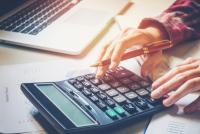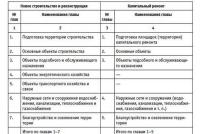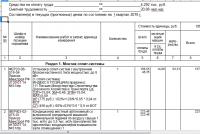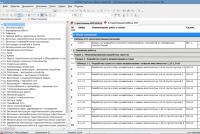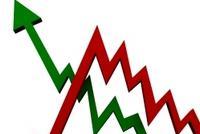A sample of the balance sheet for the year. Accounting statements: forms. Balance sheet non-current assets
All organizations periodically prepare information about their financial situation at the reporting date, financial result of operations and cash flows for reporting period in accordance with the requirements of the Federal Law dated 06.12.2011 No. 402-FZ. We are talking about accounting (financial) statements. On the balance sheet and its form in 2018-2019 we will tell in our material.
What is the balance sheet for?
As part of the financial statements, the form balance sheet - the most important form to fill out. It characterizes the financial position of the organization as of the reporting date (clause 18 of PBU 4/99).
In the balance sheet, assets and liabilities are divided, depending on the maturity (maturity), into short-term and long-term. Assets and liabilities are considered short-term if their circulation (maturity) period is no more than 12 months after reporting date or the duration of the operating cycle if it exceeds 12 months. All other assets and liabilities are shown in the balance sheet as long-term.
In what form is the balance presented
The balance sheet form was approved by Order of the Ministry of Finance of Russia dated 02.07.2010 No. 66n. This Order is valid from the annual financial statements for 2011 and has not changed significantly over the past years.
When compiling the balance sheet, the organization independently determines the detailing of indicators by item, taking into account the level of materiality.
Form 1 "Balance Sheet":
In the format Excel accounting balance 2018-2019 form:
At the same time, in the financial statements submitted to the tax and statistics authorities after the column "Name of the indicator", the column "Code" is given, in which the codes of indicators are indicated in
Balance sheet (Form 1) - the main accounting report, which is submitted to the Federal Tax Service at the end of the calendar year. You can download the current 2015 balance sheet form and a sample of filling it out for 2014 using the links at the bottom of the article.
The completed balance sheet for 2014 must be returned no later than March 2015. A report (previously called form 1) is submitted to the tax office, where the organization is registered.
Since 2013, all organizations are required to maintain accounting in any taxation system, therefore, all organizations (including the simplified tax system) must also fill out and submit the balance sheet.
The relaxation is made for small businesses, for which and.
Financial statements, in addition to balance, also includes:
- Income statement - .
- Statement of changes in equity -;
- Cash flow statement -.
Sample filling out the balance sheet for 2014
The form 1 report contains data for the reporting year and the two previous years (that is, for 2012, 2013 and 2014). Data are taken at the end of the year (as of December 31st of each year).
The balance sheet contains two sheets: assets and liabilities.
Filling in the balance sheet assets:
Balance sheet assets include current and non-current assets. The first includes all the property of the organization that has a circulation period of less than a year. The second includes property with a circulation period of more than 1 year.
Each of the sections contains the so-called balance sheet items. Each article has its own name and digital code. Each line reflects data corresponding to the name of assets.
Section 1 Non-current assets
1110 – residual value intangible assets (the difference between the initial (or replacement) value of intangible assets on account 04 and depreciation on account 05).
1120 - data on research and development (recorded on a separate sub-account of account 04).
1130, 1140 - costs associated with mineral deposits (search, exploration, development, etc.).
1150 - residual value of fixed assets (the difference between the initial (or replacement) cost of fixed assets on account 01 and depreciation on account 02.
1160 - the residual value of the property for rent (the difference between the debit of account 03 and the credit of account 02 in relation to this property).
1170 - long-term financial investment (over 1 year).
1180 - deferred tax assets (account 09).
1190 - other assets related to non-current and not reflected in the items above.
1100 - the sum of all indicators for each year for the first section of the balance sheet.
Section 2 Current assets
1210 - Refinery - raw materials, products, goods.
1220 - VAT specified in the supplier's documents, but not accepted for deduction (account balance 19).
1230 - debt to the organization (data can be taken from accounts 60, 62, 76, 73).
1240 - short-term financial investments (less than 1 year).
1250 - the sum of all cash and cash equivalents (cash (account 50), non-cash (account 51), currency (account 52), checks, letters of credit (account 55)).
1260 - other assets related to current and not reflected in the items above.
1200 - the sum of all current assets of the balance sheet.
1600 - the sum of indicators from lines 1100 and 1200 - the total amount of the company's assets.
Filling balance liabilities
By analogy with assets, information is entered here on all the liabilities of the organization that form the assets. The sum of all liabilities will have to equal the sum of all the assets of the organization, in this case it will be considered that the balance sheet is drawn up correctly.
All liabilities in the balance sheet are divided into three sections: capital and reserves, long-term and short-term liabilities.
Section 3 Capital and reserves
Information on the organization's equity capital, data is taken from accounts 80 (authorized capital), 83 (additional capital), 82 (reserve capital).
It also reflects the amount of revaluation and markdowns arising from the revaluation of the value of the property (reflected on account 83).
Joint-stock companies in line 1320 indicate the value of the redeemed shares from shareholders.
The final financial results for 2014 is reflected in line 1370 - taken from account 84.
1300 - the sum of all indicators for the third section.
Section 4 Long-term liabilities
It reflects all the liabilities of the organization, the term of which exceeds 1 year - long-term loans, loans, deferred income tax, estimated liabilities and other obligations.
1400 - the sum of all long-term balance sheet obligations.
Section 5 Current liabilities
By analogy with the previous section, information is entered here about all the obligations of the organization, the return period of which is less than 1 year.
1500 - the sum of all short-term liabilities on the balance sheet.
1700 - the sum of all liabilities of the enterprise, the sum of the indicators from lines 1300, 1400 and 1500.
The data on line 1600 must match the data on line 1700.
Information about previous years the balance is entered on the basis of the completed balance sheet forms for previous years.
Download the balance sheet for 2015 -.
Download a sample balance sheet for 2014 -.
Example conditions
Vympel LLC, registered in 2015, produces furniture (main activity), as well as wholesale trade in purchased goods. Organization details are given in table. 1. Data for filling out the balance sheet for 2015 - in the following table. 2.
Table 1. General information about LLC "Vympel"
Table 2. Balances in the accounting accounts of Vympel LLC as of December 31, 2015
Account, sub-account |
Balance as of 31.12.2015, RUB |
|
|---|---|---|
|
debit |
credit |
|
|
01 "Fixed assets" |
||
|
02 "Depreciation of fixed assets" |
||
|
04 "Intangible assets" |
||
|
05 "Amortization of intangible assets" |
||
|
08 "Investments in non-current assets" |
||
|
09 "Deferred tax assets" |
||
|
10 "Materials" |
||
|
20 "Main production" |
||
|
41 "Products" |
||
|
43 "Finished goods" |
||
|
50 "Cashier" |
||
|
51 "Settlement accounts" |
||
|
58 " Financial investments", 58 subaccount" Provided loans "(loan repayment period exceeds 12 months) |
||
|
60 "Settlements with suppliers and contractors", 60 subaccount "Settlements for purchased goods, services" (short-term debt) |
||
|
60 "Settlements with suppliers and contractors", 60 subaccount "Advances issued" (short-term debt) |
||
|
62 "Settlements with buyers and customers", 62 subaccount "Settlements on the sold goods and materials" (short-term debt) |
||
|
62 "Settlements with buyers and customers", 62 subaccount "Advances received" (short-term debt) |
||
|
68 "Calculations of taxes and fees" (short-term debt) |
||
|
69 "Payments for social and security" (short-term debt) |
||
|
70 "Payments to staff for wages" (short-term debt) |
||
|
71 "Settlements with accountable persons" (short-term debt) |
||
|
76 "Settlements with other debtors and creditors", 76 subaccount "Provided interest-free loan" (long-term debt) |
||
|
77 "Deferred tax liabilities" |
||
|
80 " Authorized capital» |
||
|
82 "Reserve capital" |
||
|
84 "Retained earnings (uncovered loss)" |
||
An example of filling out a balance sheet asset
Let's comment on the filling of individual lines in the balance sheet asset.
The indicator of line 1110 "Intangible assets" is determined as follows: from the debit balance of account 04, the balance of account 05 is deducted. In total, we obtain the residual value of intangible assets in the amount of 56,000 rubles. (80,000 rubles - 24,000 rubles).
The indicator of line 1150 "Fixed assets" is calculated as follows: debit balance of account 01 - credit balance of account 02. Result - residual value of fixed assets in the amount of 768,900 rubles. (1,000,000 rubles - 231,100 rubles).
The indicator of line 1190 "Other non-current assets" is construction in progress (account 08) and an interest-free loan, which is a long-term receivable (account 76). The total amount is 113,500 rubles. (RUB 68,500 + RUB 45,000).
The indicator of line 1210 "Inventories" includes balances by materials (account 10), costs in work in progress (account 20), the cost of goods for resale (account 41), and finished products (account 43). The total figure is 292,760 rubles. (58 900 rubles + 38 660 rubles + 137 000 rubles + 58 200 rubles).
The indicator of line 1230 "Accounts receivable" consists of the debit balances of accounting accounts in the part of short-term debt and is equal to 493,344 rubles. (34 090 rubles + 457 834 rubles + 1420 rubles).
Line exponent 1250 " Cash and cash equivalents ”is found by adding the debit balance of accounts 50 and 51. The result is 1,122,767 rubles. (RUB 1,390 + RUB 1,121,377).
An example of filling out the liability of the balance sheet
For the balance sheet liability it is required to calculate the indicator of line 1520 "Accounts payable". It is made up of credit balances of accounts for accounting settlements in terms of short-term debt and is equal to 2,552,863.80 rubles. (2 111 110 rubles + 210 900 rubles + 16 104.80 rubles + 27 835 rubles + 186 914 rubles).
The rest of the calculation indicators do not require and are simply posted to the corresponding balance sheet items.
A sample of filling out the balance sheet for the considered example, see below.
Have a question? Our experts will help you in 24 hours! Get New
Form 2 of the financial statements is a profit and loss statement known to all accountants. Most recently, it changed its name, but the essence remains the same. Where can I find the current form? How to fill it in correctly? How to check for errors? We will consider the answers to these and other questions using an example in the material below.
Financial statements: forms 1 and 2
The financial statements are drawn up and submitted in accordance with the forms approved by the order of the Ministry of Finance of Russia dated 02.07.2010 No. 66n. Financial statements - forms 1 and 2 - are submitted by all organizations. In addition to forms 1, 2 of financial statements, there are appendices to them (subparagraphs 2, 4 of the order of the Ministry of Finance of Russia dated 02.07.2010 No. 66n):
- statement of changes in equity;
- cash flow statement;
- explanations to the balance sheet and the statement of financial results.
For small businesses, it is mandatory to submit only Form 1 of the financial statements and Form 2 as part of the annual reporting.
Facing difficulties in completing financial statements? Ask on our forum! For example, experts advise members of the forum on the reflection of a large transaction in the balance sheet.
Balance sheet form 2: one report - two titles
Form 2 of the balance sheet - under this name we traditionally understand the reporting form, which contains information about the income, expenses and financial results of the organization. Its current form is contained in the order of the Ministry of Finance of Russia dated 02.07.2010 No. 66n, in which it is called a report on financial results.
In the law “On Accounting” dated November 21, 1996, No. 129-FZ, in force until 2013, this form was called the Profit and Loss Statement, and in the law that replaced it, dated December 6, 2011 No. 402-FZ, the Financial Results Report. At the same time, the form itself began to bear such a name quite recently: "Profit and Loss Statement" was officially renamed into the Statement of Financial Results only on 05/17/2015, when the order of the Ministry of Finance of Russia dated 04/06/2015 No. 57n entered into force, which made changes to the reporting forms ...
By the way, now Form 2 is not the official, but the generally accepted name of the report. It ceased to be official since 2011, when the order of the Ministry of Finance of the Russian Federation of July 22, 2003 No. 67n, which approved the previous forms of accounting, which was called this way, became invalid: Form 1 "Balance Sheet", Form 2 "Profit and Loss Statement", Form 3 "Statement of changes in equity".
Form 2 of the balance sheet is a table above which there are:
- reporting period and date;
- information about the organization (including codes OKPO, TIN, OKVED, OKOPF, OKFS);
- unit of measurement (most often it is expressed in thousand rubles).
The table with reporting indicators consists of 5 columns:
- number of the explanation for the report;
- indicator name;
- line code (it is taken from Appendix 4 to Order No. 66n);
- the value of the indicator for the reporting period and the same period last year, which is carried over from the report for the last year.
The indicators of the previous and the reporting year should be comparable. And this means that last year, in the event of a change in accounting rules, should be transformed into the current reporting year regulations.
Report on financial results - the lines are decrypted according to certain rules. Let's look at how to fill out individual lines of the report.
1. Revenue (line code - 2110).
Shown here are incomes from ordinary activities, in particular from the sale of goods, performance of work, provision of services (clauses 4, 5 of PBU 9/99 "Income of an organization", approved by order of the Ministry of Finance of Russia dated 06.05.1999 No. 32n).
This is the turnover on the credit of account 90-1 "Revenue", reduced by the debit turnover on sub-accounts 90-3 "VAT", 90-4 "Excise".
Read about whether it is possible to judge the amount of revenue from the balance sheet in the article "How is revenue reflected in the balance sheet?" .
2. Cost of sales (line code - 2120).
Here is the amount of expenses for ordinary activities, for example, costs associated with the manufacture of products, the purchase of goods, the performance of work, the provision of services (clauses 9, 21 PBU 10/99 "Organization costs", approved by order of the Ministry of Finance of Russia dated 06.05.1999 No. 33n).
This is the total debit turnover for subaccount 90-2 in correspondence with accounts 20, 23, 29, 41, 43, 40, 46, except for accounts 26 and 44.
The indicator is given in parentheses, since it is subtracted when deriving the financial result.
3. Gross profit (loss) (line code - 2100).
This is profit from ordinary activities, excluding selling and administrative expenses. It is defined as the difference between the key figures of lines 2110 “Revenue” and 2120 “Cost of sales”. Loss, as a negative value, is hereinafter reflected in parentheses.
4. Selling expenses (line code - 2210, the value is written in parentheses).
These are various expenses associated with the sale of goods, works, services (clauses 5, 7, 21 PBU 10/99), that is, debit turnover on subaccount 90-2 in correspondence with account 44.
5. Administrative expenses (line code - 2220, the value is written in parentheses).
It shows the costs of running an organization if accounting policies their inclusion in the cost price is not provided, i.e. if they are debited not to account 20 (25), but to account 90-2. Then on this line indicate the debit turnover for subaccount 90-2 in correspondence with account 26.
6. Profit (loss) from sales (line code - 2200).
Here, the profit (loss) from ordinary activities is displayed. The indicator is calculated by subtracting lines 2210 "Commercial expenses" and 2220 "Administrative expenses" from line 2100 "Gross profit (loss)"; its value corresponds to the balance of account 99 on the analytical account for accounting for profit (loss) from sales.

7. Income from participation in other organizations (line code - 2310).
These include dividends and the value of property received upon leaving the company or upon liquidation (clause 7 of PBU 9/99). The data is taken from the analytics for the credit of account 91-1.
8. Interest receivable (line code - 2320).
This is interest on loans securities, commercial loans, as well as paid by the bank for using the money available on the organization's current account (clause 7 of PBU 9/99). Information is also taken from the analytics on the credit of account 91-1.
9. Interest payable (line code - 2330, the value is written in parentheses).
It reflects the interest paid on all types of debt obligations (except for those included in the cost of the investment asset), and the discount payable on bonds and bills. This is an analyst for the debit of account 91-1.
10. Other income (time code - 2340) and expenses (code - 2350).
These are all other income and expenses that have passed through 91 accounts, except for those indicated above. Expenses are written in parentheses.
11. Profit (loss) before taxation (line 2300).
The line shows the accounting profit (loss) of the organization. To calculate it, to the indicator of line 2200 "Profit (loss) from sales" you need to add the values \u200b\u200bof lines 2310 "Income from participation in other organizations", 2320 "Interest receivable", 2340 "Other income" and subtract the indicators of lines 2330 "Interest to payment ”and 2350“ Other expenses ”. The value of the line corresponds to the balance of account 99 on the analytical account for accounting profit (loss).

12. Current income tax (line code - 2410).
This is the amount of tax calculated to be paid according to the income tax return.
Organizations in special regimes reflect on this line the tax corresponding to the applicable regime (for example, UTII, ESHN). If taxes under special regimes are paid along with income tax (when the regimes are combined), then the indicators for each tax are reflected separately on separate lines introduced after the indicator of the current income tax (annex to the letter of the Ministry of Finance of Russia dated 06.02.2015 No. 07-04- 06/5027 and 25.06.2008 No. 07-05-09 / 3).
Organizations using PBU 18/02 (approved by order of the Ministry of Finance of Russia dated November 19, 2002 No. 114n) further show:
- permanent tax liabilities (assets) (line code - 2421);
- changing IT (line 2430) and IT (line 2450).
Line 2460 "Other" shall reflect information on other indicators affecting net profit.
The net profit itself is shown on line 2400.
- the result of the revaluation of non-current assets not included in the net profit (loss) of the period (line 2510);
- the result of other transactions not included in the net profit (loss) of the period (line 2520);
- the aggregate financial result of the period (line 2500);
- basic and diluted earnings (loss) per share (lines 2900 and 2910, respectively).
Form 2 of the balance sheet is signed by the head of the organization. The signature of the chief accountant has been excluded from it since 05/17/2015 (order of the Ministry of Finance of Russia dated 04/06/2015 No. 57n)
Statement of financial results: an example of filling
For clarity, we present excerpts from the balance sheet for 2018 (in rubles), formed before the balance sheet reform and necessary to fill out the statement of financial results.
|
Account (subaccount) |
|||
|
Name |
|||
|
Deferred tax assets |
|||
|
Deferred tax liabilities |
|||
|
Cost of sales |
|||
|
Administrative expenses |
|||
|
Profit / loss from sales |
|||
|
other expenses |
|||
|
Balance of other expenses |
|||
|
Profit and loss |
|||
|
Profits and losses (excluding income tax) |
|||
|
Income tax |
|||
|
Contingent income tax expense |
|||
|
Permanent tax liability |
|||
When the balance sheet is restructured by posting Dt 99.01.1 Kt 84.01, a net profit in the amount of 8,590,800 rubles will be written off.
Based on the above data, consider Form 2 of the financial statements - a sample filling for 2018 (data for 2017 are taken from last year's report):
|
Indicator name |
For 2018 |
For 2017 |
|||||
|
Cost of sales |
|||||||
|
Gross profit (loss) |
|||||||
|
Business expenses |
|||||||
|
Administrative expenses |
|||||||
|
Profit (loss) from sales |
|||||||
|
Income from participation in other organizations |
|||||||
|
Interest receivable |
|||||||
|
Percentage to be paid |
|||||||
|
Other income |
|||||||
|
other expenses |
|||||||
|
Profit (loss) before tax |
|||||||
|
Current income tax |
|||||||
|
including permanent tax liabilities (assets) |
|||||||
|
Change in deferred tax liabilities |
|||||||
|
Change in deferred tax assets |
|||||||
|
Net income (loss) |
|||||||
|
Indicator name 2) |
For 2018 |
For 2017 |
|
|
Result from revaluation of non-current assets, not included in net profit (loss) of the period |
|||
|
Result from other operations not included in the net profit (loss) of the period |
|||
|
Aggregate financial result of the period |
|||
|
For reference Basic earnings (loss) per share |
|||
|
Diluted earnings (loss) per share |
Where to find form 2 of the balance sheet
Form 2 of the balance sheet can be downloaded on our website.

Also templates of all forms of accounting and tax reporting available on the website of the Federal Tax Service in the section "Tax and accounting reporting".
Outcome
Form 2, or a report on financial results, is created on the form of the established form and is subject to certain filling rules. Its data show from what kind of income and expenses the net profit is formed in the reporting period.
Balance sheet Form 1 is a statement of financial position. It reports the financial positions of the company based on its assets and shows the resource of the company (enterprise). Balance is basically an equation accountingwhere assets are always equal to liabilities plus share capital.
What makes up the balance sheet
The resources or "asset" of a company (enterprise, organization) can be divided into two parts:
- non-current assets - buildings, equipment, investment for a period of more than 1 year (section 1);
- working capital (section 2).
Liabilities or "liabilities" give an idea of \u200b\u200bwhat forms the resources of the company and include sections:
- capital and reserves (section 3);
- long-term liabilities (section 4);
- short-term liabilities (section 5).
You can download a balance sheet form in the form of an Excel Workbook, it also includes Reports:
- about financial results,
- about changes in capital,
- on the targeted use of the acquired funds.
How to fill out the balance form
Where to begin
The balance sheet, an example of filling out that can be given for any organization, is not difficult for a specialist. Filling out the balance sheet begins with a "header". The TIN and KPP are indicated at the top, and the date of the balance sheet is just below. Following is the name of the organization, its type of activity according to the OKVED classifier, its individual OKPO code.
The next line is the form of ownership according to OKFS (private - code 16). Below is the code for OKOPF, which represents its legal form (for the balance sheet of LLC code 65). The next is the code for OKEI of numerical records (thousand or million rubles), the code 384 or 385 is written. Next, it is indicated how many pages the balance sheet takes, and the number of application pages.
At the bottom left, the balance sheet form 2014 has a subsection where the data of the head of the company or authorized representative, chief accountant is entered and the name of the document certifying the rights of the representative is indicated.
Then the details of the legal address companies.
About the non-current assets of the balance sheet:
- 1110 - intangible assets (data 1120 is not taken into account);
- 1120 - information on R&D (results of research and development);
- (1130 - 1140) - reports on the search and exploration of the location of minerals and the equipment used;
- 1150 - fixed assets (their residual value);
- 1160 - the cost of material assets and profitable investments recorded on account 03.
- 1170 - financial investments of the enterprise for a period of more than 12 months (debit accounts 58 and 55 subaccount "deposits");
- 1180 - balance of account 09 (attributed tax assets);
- 1190 - other non-negotiable resources not shown above;
- 1100 - the final amount of all funds on lines 1110-1190.
Now comes the turn of current assets:
- 1210 - reflects the cost of inventories in sets 10, 15, 20, 21, 23, 28, 29, 41 - 45, 97;
- 1220 - the amount of VAT on purchased values, presented by the supplier, but for some reason not accepted for deductions (account balance 19);
- 1230 – accounts receivable counterparties (from 60, 62, 68, 69, 70, 71, 73, 75, 76 accounts);
- 1240 - financial investments, the period of which is less than a year;
- 1250 - funds of a company (enterprise, organization) in cash equivalent in rubles (accounts 50 and 51), in foreign currency (52), in checks and letters of credit (account 55);
- 1260 - other assets of this group not shown in the above lines of the company's balance sheet;
- 1200 - the summarized sum of all assets for this subsection, listed in the sample balance sheet.
The balance is the sum of all its totals: 1100 + 1200.
The new form also reflects the sources of assets formation.
Capital and reserves:
- 1310 - the capital of the enterprise (charter), from the balance of the account 80;
- 1320 - the company's shares (own, redeemed from shareholders) are reflected in the debit balance of account 81;
- 1340 - the sum of the changed value of fixed assets and intangible assets, if a revaluation was carried out (account 83);
- 1350 - the amount of additional capital minus 1340;
- 1360 - the capital of the reserve, data from account 82;
- 1370 - retained earnings (uncovered damage) - from account 84;
- 1300 - the total amount is 1310-1370.
Long-term liabilities:
- 1410 - loans and borrowings with a period of more than twelve months on account 67;
- 1420 - deferred tax liabilities from credit 77;
- 1430 - estimated liabilities from credit 96 for a period of over twelve months;
- 1450 - other liabilities with a term exceeding twelve months;
- 1400 - total value-sum 1410 - 1450.
Short-term liabilities:
- 1510 - short-term credits and loans (account 66) and long-term, transferred to short-term (account 67);
- 1520 –accounts payable suppliers, personnel, etc. (from 60, 62, 68, 69, 70, 71, 73, 75, 76);
- 1530 - loan balance 98;
- 1540 - taxable liabilities, credit 96, for a period of less than twelve months;
- 1550 - other liabilities for up to twelve months, not specified above in this section of the liabilities of the sample balance sheet.
- 1500 - the total amount is 1510 - 1550.
Balance is the summation of all three parts of the liability (1300 + 1400 + 1500).
The 2014 filling sample is painted in the newest form in an accessible form, you just need to fill in the data.
The balance sheet should result in equality:
1100 + 1200 = 1300+1400+1500.
in other words, the sum of all assets must equal the sum of liabilities, if this condition is met, then the balance sheet was drawn up without accounting errors, and the finished form can be fearlessly handed over to the appropriate organizations.
Reporting rules
Data in the balance sheet, sample form No. 1 are entered for three years: reporting and two past.
If an enterprise uses a simplified form of taxation and has not previously reported on this form before the balance sheet for 2014, then it should restore data for the last two years. That is, it is necessary to fill in all the columns for two more dates: 12/31/12 and 12/31/13. For data recovery, it is allowed to use information from existing lists and a continuous inventory (inventory).
Data as of January 1 of the previous year must match the figures for the last calendar day of the previous year (December 31).
How to read the new rules on the provision of financial statements? Since 2013, reporting is submitted once a year, an explanatory note is not included in it. Two copies of the reporting are issued. The completed balance sheet is submitted to the Tax Inspectorate and the State Statistics Committee no later than three months after the end of the reporting year.
Free download:
Similar articlesMore from the site:
Site search
The majority of enterprises, regardless of their organizational form, engaged in the processing or resale of natural products, purchase them for their ...

